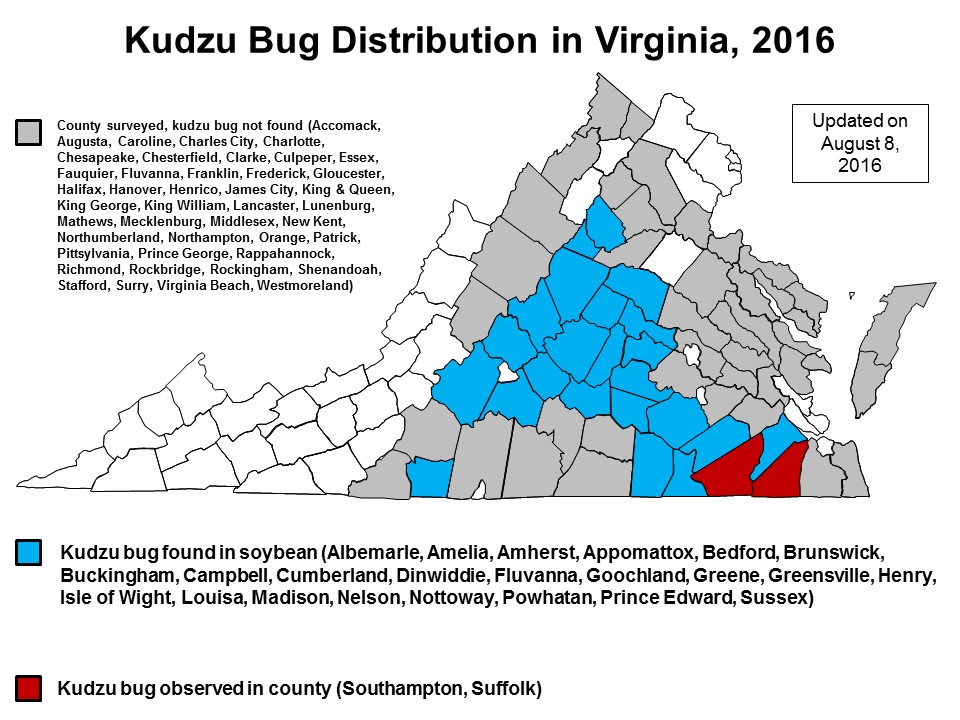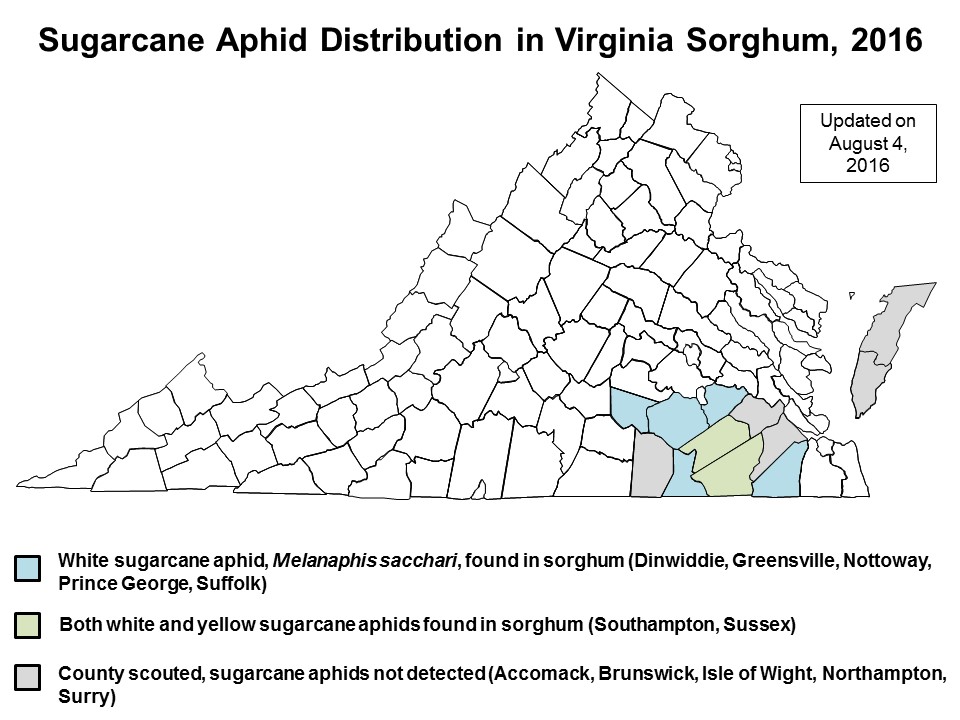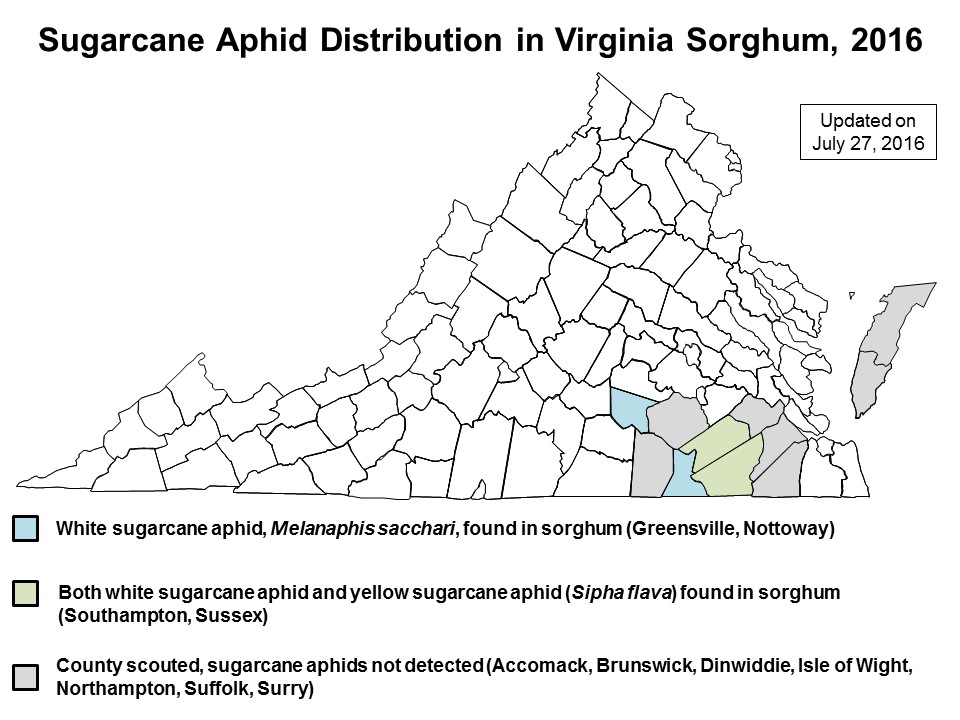NIghtly black light trap captures of corn earworm (bollworm) moths rose sharply at most reporting stations this week. Historically, this time of year is when we see our peak moth flight occur, which is followed by egg laying. Mike Arrington (Tidewater AREC Entomology) found an average of 12 bollworm eggs per 100 bloom/bloom tags in Suffolk cotton, which is almost egg threshold (the Pest Management Guide defines the egg threshold as 15-20 eggs per 100 blooms or bloom tags for Bollgard cotton). In peanut, a field near Stony Creek (Sussex Co.) had threshold numbers of corn earworm larvae (4 larvae per row foot when using a beat cloth).
Black light traps caught low to moderate numbers of brown marmorated stink bugs (BMSB) this week, ranging from zero in some locations, to over 5 per night at Warsaw. BMSB findings from the statewide soybean survey are mentioned in my August 9th post. Please see the attached pdf for the black light trap tables for both of these pest species: blt_11_Aug_2016






